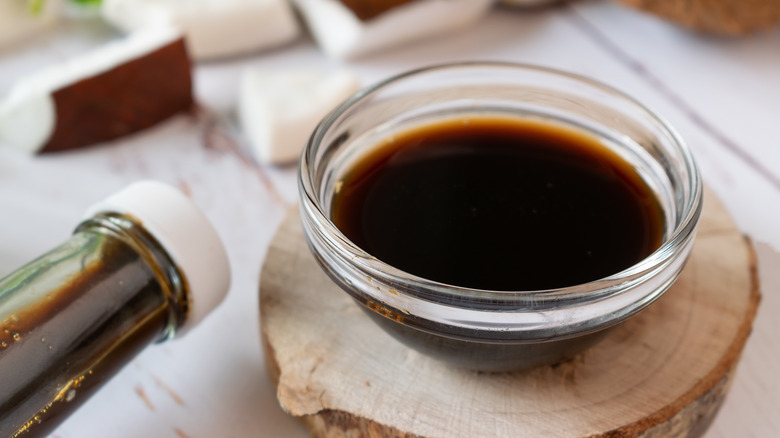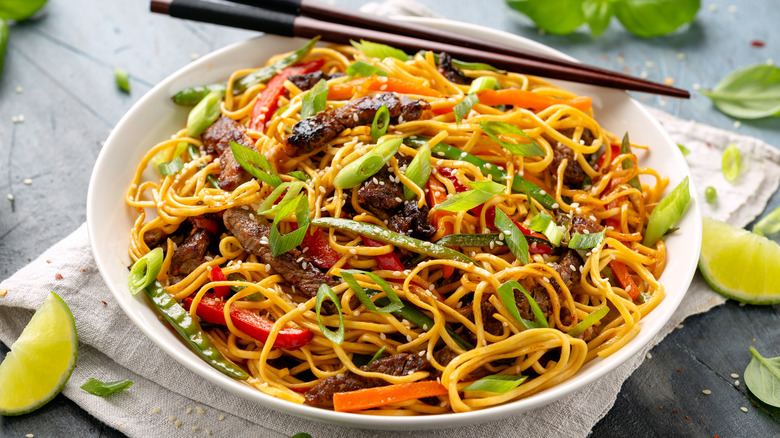The Fermented Soy Sauce Substitute For Your Soy-Free Cooking Needs
Coconut has been turned into just about everything — alongside its vegetable counterpart, cauliflower — thanks to the rise in paleo, keto, and gluten-free ways of eating. Its aminos form came on the scene about the same time as cauliflower rice. The two are seemingly perfect hand-in-hand substitutes for a paleo diet.
While once only found at specialty and health markets, coconut aminos are giving soy sauce a run for its money these days. Bottles now sit beside soy sauce and tamari varieties on most grocery store shelves, and they even come in boxes of take-a-long individual serving size packets just like its soy sauce predecessor.
Safe to say coconut aminos may soon make their way into restaurants similar to the way tamari (i.e. gluten-free soy sauce) has amidst the gluten shunning crowd. These aminos come from a coconut, but look like and are used like soy sauce, so what exactly is a coconut amino anyway?
What are coconut aminos?
Much like how maple syrup comes from the sap of a maple tree, coconut aminos are made from the nectar of a coconut palm tree, specifically its flowers. This sap is then left to age and ferment with a bit of salt added. That's it, in a nutshell. The simple sauce has a shelf life of about two years, and should be refrigerated after opening.
Because the liquid is made from a coconut blossom, coconut aminos are naturally soy-free, gluten-free, and contain much less sodium than soy sauce, according to WebMD. They have 17 amino acids (hence its namesake, per Medical News Today), which may be generating middle school science class flashbacks of the "building blocks of life" for you right now. Amino acids are simply what proteins are broken down into in order for your body to absorb and make use of them.
Paradoxically, coconut aminos taste pretty much nothing like coconut, making them a decent stand-in for soy sauce because of its adaptability.
How to swap coconut aminos for soy sauce
A bottle of coconut aminos looks just like soy sauce, and can be used in the same fashion, but does it taste like it? While you may be eager to start dipping your favorite spicy tuna roll in a ramekin of this gluten-free substitute, it's worth noting the flavor differences are not entirely undetectable; in fact, they're a pretty significant step above subtle. That being said, it's still a great alternative for a sushi bath, but don't expect that familiar umami to linger on your palate.
Coconut aminos fall on the sweeter side of the spectrum in comparison to soy's salty and savory. However, it's a pretty straightforward swap for any recipe you'd otherwise choose to use soy sauce for. Want to keep a stir-fry gluten and/or soy-free? Coconut aminos have you covered. The main difference in taste between the two comes down to seasoning, or ultimately lack thereof.
Bottom line: If a recipe calls for soy sauce and you want to swap-in coconut aminos, go ahead at a one-to-one ratio, and maybe add a substantial pinch of salt. If a recipe calls for coconut aminos and you want to sub-in soy sauce, check for salt elsewhere in the ingredient list and scale it back a touch.


